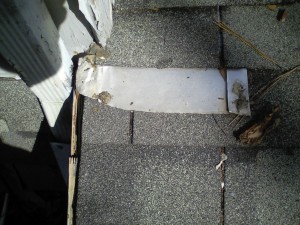
Your roof is susceptible to a variety of issues, from strong weather damage to damage from debris such as tree limbs and other objects.
Out of these problems, there are 5 identifiable roof component areas where problems occur so often they can be classified as common and therefore deserve attention when it’s time for inspections and immediate repair when problems are found.
The following lists these areas (in no particular order) and what to look out for when inspecting your roof. Should you find any of these issues, contacting your local roof contractor and having a full inspection should be your next step to ensuring the any damage is found and repaired.
Fascia
More commonly known as roof trim, fascia is a term used for the band that runs horizontally under a roofs edge. Typically made of wood boards or sheet metal this connects from the edge of the rafters and trusses to the where gutters attach to the roof.
Fascia protects by acting as a protective layer between your roof’s edge and the environment. Protecting against harsh weather, especially water, the fascia is susceptible to damage from moisture and should be inspected regularly for signs of rot or other water damage would should be repaired immediately by a roof contractor when problems are found.
Soffit
Sometimes referred to in conjunction with fascia, soffit is the finished surface just below the fascia and rafters and also refers to the exposed area beneath the overhanging section of a roof eave.
Mostly made from vinyl due to it’s water-resistant properties and cost effectiveness, soffits are exposed to the environment and like fascia are susceptible to weather. When performing an inspection look for rotting, holes, and cracks that can let water and even small animals into your home.
Shingles
As one of the most common roof types, shingles offer great protection from the elements but are constantly exposed to the weather and are especially susceptible to storms, heat, cold, wind and other harsh weather.
Although damage can be done by weather events, many problems with shingles begin with poor installation or improper ventilation. When shingles are working properly, damage to your roof and home can be substantial. Discoloration is indicative of a roof leak and can spread to become a large hole while curling is caused by improper ventilation, high nails or improperly installed fasteners. Shingles with obvious problems or missing altogether leaves your roof open to big problems so noticing an issue should be attended to immediately to prevent further damage.
Flashings
Flashings are roof components used to seal any area on the roof where other components end and any place where the roof covering is terminated or interrupted. Usually used in areas such as roof valleys, drains, walls, roof edges and penetration areas (such as around chimneys) flashings help seal the roof from rain and moisture by filling in the gaps between other components and the roof itself.
Typically made from aluminum or sheet metal, flashings are also susceptible to weather and can rust or even come loose. Should any problems be noted with flashings, immediate repair is needed as other repairs to prevent the problem from getting worse.
Gutters
Gutters are designed to route water away from your home and prevent damage to the foundation from pooled water. Keeping your gutters clear is important to ensure they do their job properly as blocked gutters can cause water to pool not only affecting your foundation but also causing rot, mold or mildew under your roof.
One of the simpler things to keep up with, simply keeping your gutters clean will prevent most problems. Other than keeping them clean, keep an eye out for rusted gutters or downspouts, any places where the gutters may be detaching or holes that could prevent proper flow. If no obvious problems are seen but you can tell water isn’t being routed properly an inspection from a roof contractor can help alleviate the issue.
Should you noticed any problems in these areas contact Atlanta Roofing Specialists in Metro Atlanta at 770-419-2222 for a proper roof inspection and ensure your home is protected from the elements for years to come!
